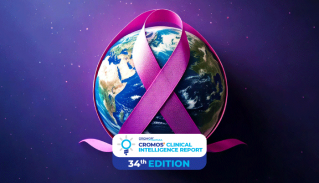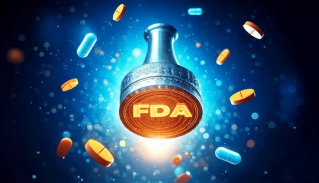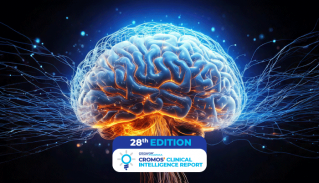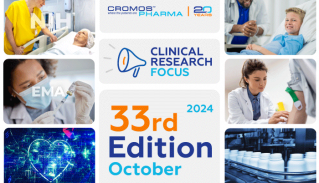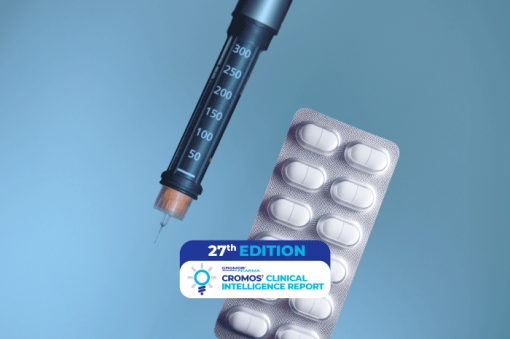
World Diabetes Day Focus: The Role of GLP-1 Agonists and SGLT2 Inhibitors in Diabetes Treatment
Key takeaways:
- GLP-1 Agonists and SGLT2 Inhibitors are two effective medication classes for managing Type 2 diabetes, each offering unique benefits.
- GLP-1 Agonists (e.g., Ozempic) provide significant blood sugar control and weight loss, ideal for patients prioritizing weight management.
- SGLT2 Inhibitors (e.g., Jardiance) offer strong heart and kidney protection, often recommended for patients with heart failure or chronic kidney disease.
- Combination Therapy of GLP-1 agonists and SGLT2 inhibitors can further enhance glucose control and cardiovascular health.
- Side Effects differ: GLP-1 agonists can cause gastrointestinal symptoms, while SGLT2 inhibitors may lead to urinary tract or genital infections.
Today, on World Diabetes Day, we turn our attention to the immense global impact of diabetes, a condition that affects over 537 million people worldwide. In the US, 38 million people of all ages are living with diabetes, with approximately 36 million individuals affected by type 2 diabetes (T2D). Across the Europe, over 60 million people live with diabetes, with about 55 million diagnosed with T2D.
For many, managing Type 2 diabetes begins with metformin, though it’s often insufficient alone. Fortunately, there are many options available beyond metformin. Two of the most effective choices are glucagon-like peptide-1 (GLP-1) agonists and sodium-glucose cotransporter-2 (SGLT2) inhibitors. Over the past decade, these medications have become increasingly popular and widely recommended due to their distinct benefits. Each has unique effects on blood glucose, heart health, and weight management, and understanding their differences helps healthcare providers tailor treatment plans to individual needs.
In this article, we provide an overview of the key differences between GLP-1 agonists and SGLT2 inhibitors.
Dosage Forms
One of the key differences between GLP-1 agonists and SGLT2 inhibitors is their form: GLP-1 agonists are mostly injections, while SGLT2 inhibitors are available only as oral tablets. GLP-1 agonist injections, like Ozempic (semaglutide), Trulicity (dulaglutide), and Victoza (liraglutide), vary in dosing frequency and are effective for blood glucose control and weight management. For those who prefer pills, Rybelsus (semaglutide) is the only oral GLP-1 option.
SGLT2 inhibitors, including Jardiance (empagliflozin), Farxiga (dapagliflozin), and Invokana (canagliflozin), are convenient once-daily tablets. They help manage blood sugar and provide added heart and kidney benefits, particularly beneficial for patients with heart failure or chronic kidney disease.
Ultimately, choosing between GLP-1 agonists and SGLT2 inhibitors often depends on preference for injections or pills. Patients should discuss these options with their healthcare providers to find the best fit for their needs.
Mechanism of Action
The key difference between GLP-1 agonists and SGLT2 inhibitors lies in how they lower blood sugar. GLP-1 agonists mimic the GLP-1 hormone in the gut, prompting the pancreas to release more insulin after meals, improving insulin sensitivity, reducing liver glucose production, and slowing digestion for steadier blood sugar levels.
SGLT2 inhibitors, meanwhile, target the kidneys by blocking the SGLT2 protein that usually reabsorbs glucose into the bloodstream. This forces excess glucose out through urine, helping control blood sugar and providing heart and kidney benefits.
Both drug classes are effective, but their distinct mechanisms allow healthcare providers to tailor treatment to individual health needs.
Weight Loss Effects
One of the notable benefits of GLP-1 agonists is their ability to promote weight loss, which has led to FDA approval of specific GLP-1 drugs like Wegovy (semaglutide) for chronic weight management. Even GLP-1 agonists approved only for diabetes, such as Ozempic, are sometimes prescribed off-label for weight loss due to their effectiveness. The American Diabetes Association (ADA) recommends GLP-1 agonists for patients aiming to lose weight alongside managing blood sugar.
SGLT2 inhibitors can also support moderate weight loss, though typically to a lesser extent than GLP-1 agonists. Because of this difference, GLP-1 agonists are often preferred when weight loss is a primary goal in diabetes management.
Benefits for Heart, Kidney and Brain Health
GLP-1 agonists and SGLT2 inhibitors, both used in managing Type 2 diabetes, show distinct impacts on the heart, kidneys, and brain:
- Cardiovascular and Renal Effects:
SGLT2 inhibitors, such as empagliflozin, significantly reduce the risk of heart failure and cardiovascular mortality in Type 2 diabetes patients. In addition, SGLT2 inhibitors offer strong kidney protection, slowing the progression of chronic kidney disease and reducing the risk of kidney failure. The medications, like Jardiance (empagliflozin), have been shown to lower risks of hospitalization and death from heart and kidney conditions.
GLP-1 agonists, such as Trulicity (dulaglutide), also provide cardiovascular protection and are FDA-approved to reduce the risk of major cardiovascular events in diabetes patients with heart disease or related risk factors. While they support heart and kidney health, SGLT2 inhibitors remain the preferred choice for patients with established heart or kidney conditions due to their more pronounced benefits in these areas. For this reason, the American Diabetes Association (ADA) generally recommends SGLT2 inhibitors over GLP-1 agonists for patients with Type 2 diabetes who also have heart failure or CKD.
- Neuroprotective Effects:
GLP-1 agonists show potential for neuroprotection and cognitive improvement, which may be beneficial in neurodegenerative diseases. SGLT2 inhibitors, however, are less studied in this area, and further research is needed to understand their neuroprotective effects.
In summary, choosing between GLP-1 agonists and SGLT2 inhibitors should be based on a patient’s specific health needs and any existing cardiovascular, renal, or neurological conditions.
A1C Reduction
GLP-1 agonists are generally more effective than SGLT2 inhibitors at reducing A1C, a critical measure of long-term blood glucose control. Research shows that GLP-1 agonists can decrease A1C by as much as 1.5% to 2%, whereas SGLT2 inhibitors typically provide a reduction of about 1%. For patients and providers focusing on substantial A1C reduction, GLP-1 agonists may be the preferred option.
However, it’s important to note that individual A1C outcomes depend on other factors, including diet, exercise, and additional medications. Patients often achieve optimal results by pairing their medication with healthy lifestyle changes.
Side Effect Profiles
GLP-1 agonists and SGLT2 inhibitors each have distinct side effect profiles, which can influence treatment choice based on individual tolerance and health conditions. GLP-1 agonists commonly lead to gastrointestinal issues, with side effects like nausea, vomiting, diarrhea, bloating, and constipation. For instance, in clinical studies, nausea was reported by up to 20-30% of patients taking GLP-1 medications like Ozempic (semaglutide) or Trulicity (dulaglutide), though symptoms often decrease as the body adjusts to the medication.
SGLT2 inhibitors, such as Jardiance (empagliflozin) and Farxiga (dapagliflozin), are associated with an increased risk of urinary and genital side effects. Common side effects include increased urination, urinary tract infections, and genital yeast infections, particularly among women. According to research, 14% of patients using SGLT2 inhibitors report genital infections, with rates even higher among female patients. These side effects arise because the medication increases glucose excretion through urine, creating an environment that supports bacterial and fungal growth, contributing to infection risks.
Both medication classes carry a minor risk of hypoglycemia (low blood sugar) when used alone, but the risk increases if combined with insulin or other blood sugar-lowering drugs.
Combination Therapy
In certain cases, combining GLP-1 agonists and SGLT2 inhibitors can improve diabetes management due to their complementary mechanisms. GLP-1 agonists work by enhancing insulin secretion and reducing glucose production, while SGLT2 inhibitors lower blood glucose by preventing its reabsorption in the kidneys. This dual approach allows for a more significant A1C reduction than using either medication alone.
A study published in Diabetes Spectrum supports the benefits of this combination, highlighting improvements not only in A1C but also in weight reduction and blood pressure control. This combined therapy demonstrated superior effectiveness in lowering HbA1c and reducing cardiovascular risks compared to monotherapy, with additional benefits such as reduced body weight and lower blood pressure, both crucial factors in managing Type 2 diabetes.
A study in Diabetes, Obesity and Metabolism examined the separate and combined effects of empagliflozin and semaglutide on vascular function in high-risk type 2 diabetes patients over 32 weeks. While combination therapy did not significantly reduce arterial stiffness, it led to substantial improvements in 24-hour systolic blood pressure, increased time within target glucose range without added hypoglycemia risk and reduced the urinary albumin-to-creatinine ratio, suggesting potential renal benefits.
These findings underscore the potential of GLP-1 agonists and SGLT2 inhibitors together to address multiple aspects of diabetes beyond glucose control.
Conclusion
GLP-1 agonists and SGLT2 inhibitors represent significant advancements in managing Type 2 diabetes, each offering unique benefits and mechanisms that cater to different patient needs. While GLP-1 agonists excel in A1C reduction and weight loss, SGLT2 inhibitors provide powerful heart and kidney protection, making them particularly valuable for patients with related health concerns. Side effect profiles also differ, with GLP-1 agonists generally causing gastrointestinal symptoms and SGLT2 inhibitors more likely to lead to urinary issues. In some cases, combining these medications can enhance treatment outcomes, supporting better A1C control and broader health benefits. Ultimately, choosing the right therapy should be based on individual health goals, existing conditions, and close guidance from healthcare providers, enabling a tailored approach to diabetes management.
Cromos Pharma’s Expertise in Diabetes Clinical Trials
Cromos Pharma has a long-standing and deep-rooted experience in conducting clinical trials in the diabetes sector. Our expertise in managing complex diabetes studies has enabled us to support global sponsors in advancing innovative treatments for both type 1 and type 2 diabetes, as well as related complications like diabetic neuropathy and retinopathy.
With a focus on ensuring high data quality and efficient patient recruitment, Cromos Pharma’s dedicated team has achieved a remarkable 95% success rate in meeting or exceeding recruitment targets. Our commitment to excellence and precision has made us a trusted partner for pharmaceutical companies aiming to bring novel diabetes treatments to market.
If you have any questions or would like to explore how Cromos Pharma can support your upcoming diabetes clinical program, please feel free to reach out via email at inquiry@cromospharma.com. We are committed to advancing your research with precision and expertise.



